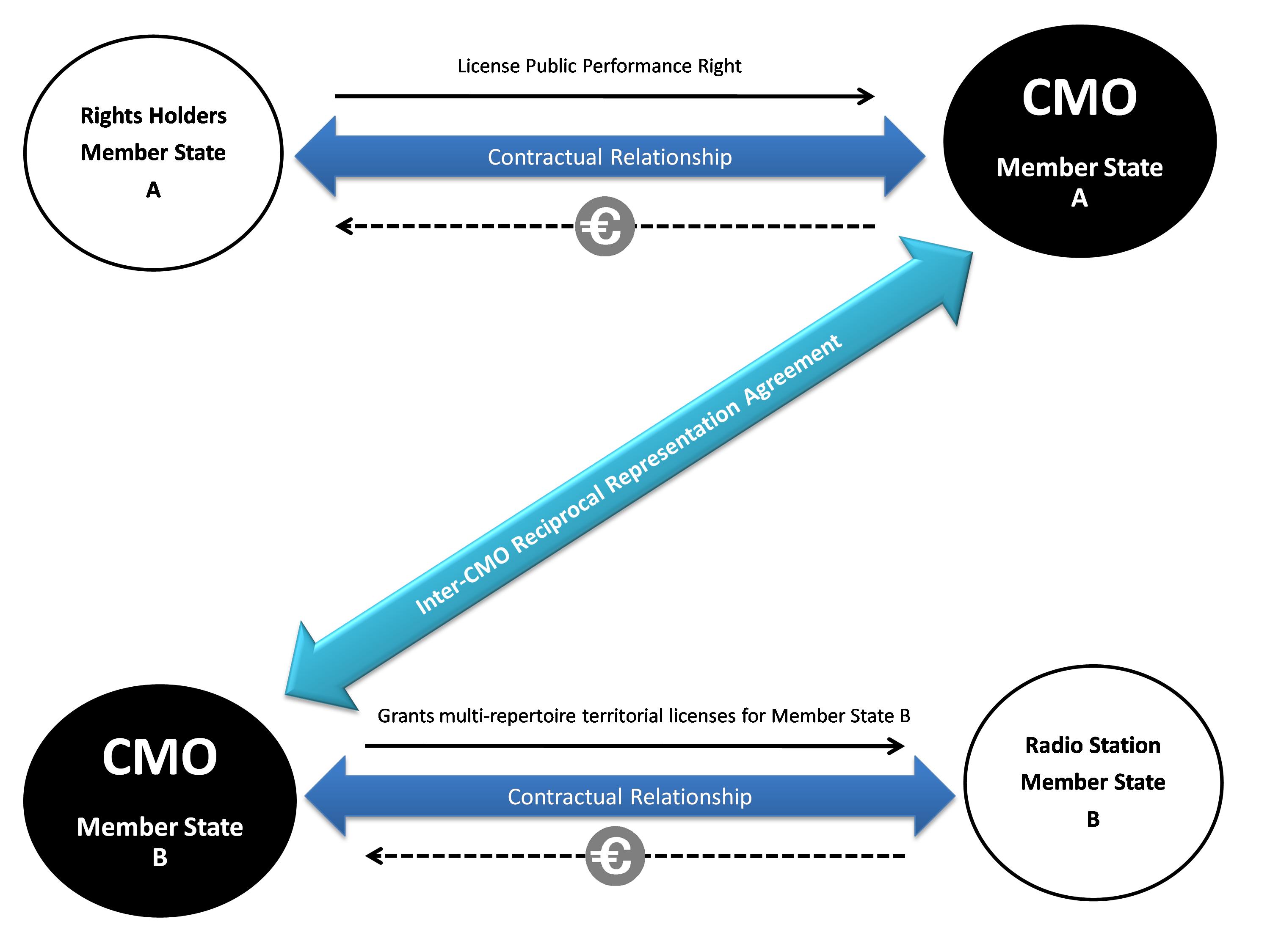 “This decision is significant insofar as it should impact the legislative process regarding the Proposed Directive “on collective management of copyright and related rights and multi-territorial licensing of rights in musical works for online uses.”
“This decision is significant insofar as it should impact the legislative process regarding the Proposed Directive “on collective management of copyright and related rights and multi-territorial licensing of rights in musical works for online uses.”
On April 12, 2013, the General Court of the European Union ended a 5 year wait and delivered its judgement in Case T–442/08 CISAC v. European Commission (CISAC 2013), as well as in twenty-two other related cases involving a like number of European collecting societies (see Press release No 43/13). In it the Court partially annulled the Commission’s decision of July 16, 2008 (CISAC 2008). This blog post will focus on the CISAC 2013 decision, as the remaining decisions follow its template. Readers familiar with the CISAC 2008 case are advised to skip directly to the “ANALYSIS” section below.
Background
The International Confederation of Societies of Authors and Composers (CISAC) is an umbrella organization representing collecting societies in over 100 countries. Its members provide services in their countries of establishment relating to the management of musical works, intermediating between authors (and foreign collecting societies) and commercial users, such as broadcasters or organisers of live shows.
The majority of EU collecting societies in this field provides services on the basis of the non-binding CISAC model contract for cross-border management and licensing of authors’ public performance rights of musical works. Collecting societies have adapted this model into Reciprocal Representation Agreements (RRAs), which scope covers the exercise of offline uses, as well as uses via the Internet, satellite and cable broadcast. Through a network of RRAs, each collecting society is granted multi-repertoire licenses covering the portfolio of other members, but is only allowed to license uses in its territory of establishment, thus restricting its ability to engage in multi-territorial licensing (MTL). The image below provides a very simplified illustration of this model:

Figure 1. CISAC Model for Cross-border Licensing (simplified).
This restrictive licensing approach led to refusals by collecting societies to grant community-wide licenses to commercial users seeking them, namely television and music broadcasters. As a result, some of these users – RTL in 2000 and Music Choice Europe in 2003 – lodged formal complaints with the European Commission, which led to the 2008 Commission’s decision – applying solely to “public performance” uses via the Internet, satellite and cable transmission. Said decision, taken under arts. 81 of the EC Treaty and 53 of the EEA Agreement prohibited twenty-four European collecting societies from engaging in practices that limited the provision of services outside their domestic territory, as these were deemed restrictive of competition. Significantly, the decision allowed for the subsistence of RRAs, subject to compliance with 3 prohibitions:
(i) The imposition (or de facto application) of membership restrictions that limit author’s freedom of choice of collecting society;
(ii) The grant of exclusive licenses to collecting societies in their territory of establishment;
(iii) The existence of concerted practices between collecting societies leading to national territorial limitations.
The first two prohibitions were addressed (at least apparently) by CISAC and its members through amendments to the model contract and the RRAs. Regarding the third, CISAC (and the collecting societies in question) brought an action for the partial annulment of the decision, in what it was later supported by the European Broadcasting Union (EBU), a representative association of broadcasters (among the largest users of musical works). Both CISAC and EBU claimed that the General Court should annul Art. 3 of the CISAC 2008 decision, which stated inter alia that CISAC and the collecting societies had coordinated “the territorial delineations in a way which limits a license to the domestic territory of each collecting society…”.
Analysis
CISAC supported its action on two main alternative pleas of law: (1) infringement of arts. 81 and 253 EC, insofar as the Commission failed to prove the “existence of a concerted practice with regard to the national territorial limitations”; and (2) should a concerted practice be found, the non-restrictive (to competition) nature of the same.
The General’s Court reasoning and decision.
In analysing this claim, the Court noted that, in disputes on the existence of an infringement, the burden of proof rests with the Commission, which must adduce “precise and consistent evidence” (“viewed as a whole”) establishing the pre-requisite circumstances of the same. As such, the subsistence of doubts regarding evidentiary elements would benefit CISAC and the collecting societies.
In the Court’s view, and in the absence of documentary evidence, the factors susceptible of proving the existence of concerted practices, other than the parallel conduct of the collecting societies, are the following:
“…the discussions on the scope of the mandates contained in the RRAs …, the Santiago Agreement, the Sydney Agreement, and the historical link between the exclusivity clause and the national territorial limitations”.
Analysing each factor, the Court was of the opinion that the Commission failed to establish the requisite legal standard of evidence of concerted practices concerning national territorial limitations. Consequently, for the Commission’s decision to be upheld, it had to have provided evidence sufficient to dismiss the alternative justifications for parallel conduct put forward by collecting societies.
CISAC and EBU argued that the decision to provide for territorial limitations in RRAs relates to the necessity to maintain a local presence so as to effectively combat infringement via unauthorized uses of musical works. In this respect, the Commission’s analysis focused mostly on authorized uses, failing to demonstrate how it would be possible for collecting societies to satisfactorily untangle the monitoring of said uses and the enforcement of unauthorized uses. For this purpose, it is not sufficient to note the existence of technical solutions and agreements that allow remote monitoring of licensees’ online uses, such as the ‘Nordic and Baltic’ model, the Simulcasting and Webcasting Agreements, the Santiago Agreement, the CELAS joint venture (facilitating the grant of direct licenses), or even a document signed by several collecting societies entitled ‘Cross border collective management of online rights in Europe’ (which endorses multi-territorial-repertoire licensing). In fact, by themselves, these practices, agreements and documents do not constitute evidence that effective enforcement of unauthorized uses is possible absent geographic proximity, namely where multiple collecting societies can provide licenses for a given national territory, thus undermining the economic incentive and practical possibilities for cooperation in this field.
In light of the above considerations, the Court concluded that the Commission failed to prove the required evidentiary legal standard for the “existence of a concerted practice relating to the national territorial limitations”, either by (1) demonstrating the existence of a concerted practice to that aim, or (2) by showing that the collecting societies’ justifications for the parallel conduct – namely those related with the need to effectively enforce unauthorized uses – were implausible. As a result, Art. 3 of the CISAC 2008 decision was annulled, to the benefit of CISAC and 20 of the collecting societies involved. (in the case of 2 applicants – STIM and SGAE – the actions were dismissed or found inadmissible on procedural grounds.)
Reactions and Potential Significance
Feeling vindicated, CISAC’s Director-General welcomed the decision, noting that it allows his association “to get back to the job of ensuring the 3 million creators and rights holders that we represent obtain a fair income from the use of their creative work, and to continue developing licensing models that meet the market’s needs.” CISAC’s Director of Legal and Public Affairs considered this to be “a major victory for CISAC”, highlighting the Court’s conclusions that technologic developments per se do not make existing collective rights management structures anti-competitive, and that there are valid justifications for structuring such services via a one-territory/one-society model.
In this blogger’s view, implicit (and at certain passages explicit) in the Court’s judgement is a reproach of the Commission’s evidence gathering in this process, leading both to unsubstantiated claims and even to blatant contradictions between the 2008 decision and its posterior interventions in replies to the Court and during the course of the oral hearings. This decision is significant insofar as it should impact the legislative process regarding the Proposed Directive “on collective management of copyright and related rights and multi-territorial licensing of rights in musical works for online uses” (noted here and here).
To remind readers, the Proposed Directive’s Title III is aimed at enabling and indeed promoting the granting by collecting societies of MTL for online rights in musical works, through a rather complex “European Licensing Passport System”. This MTL system is an offspring of the Commission’s proposed model in the 2005 Online Music Recommendation and seeks to dismantle (at least for online exploitation of author’s rights in musical works) the RRAs system favoured by collecting societies, with the aim to foster competition at the rights holders level. In its (very thorough and critical) Comments to the Proposed Directive the MPI for IP and Competition Law notes that the previous RRA model emerged as a result of a natural monopoly of collecting societies in national territories, which “adequately responded to the economic needs of both rightholders and users” (para.64). This position of natural monopoly, coupled with the RRA model (allowing for the aggregation of repertoire) and the practice of blanket licensing allowed for collecting societies to address the challenges of fragmentation of rights and legal uncertainty in a way that the Commission’s MTL Passport system does not. The MPI scholars conclude that the proposed system is contrary to the foundations of collective rights management and seem to advocate a preference for the option of a centralised licensing portal (identified as Option B5 in the Impact Assessment of the proposed Directive).
The CISAC 2013 decision undermines the Commission’s justification for the proposed MTL system, even if it is mostly the result of a failure by the latter to produce evidentiary support for its claims. If national territorial limitations are not deemed anti-competitive but are instead perceived as the most efficient collective rights management scheme for online exploitation of author’s (public performance) rights – an assertion emphasized by CISAC’s intention to “go back” to that model –, then one could argue that the Commission’s intentions to foster an MTL passport system should be reconsidered. Of course, it is also possible for the Commission to appeal this decision (on the points of law) to the Court of Justice. To be continued?
JPQ
________________________
To make sure you do not miss out on regular updates from the Kluwer Copyright Blog, please subscribe here.


